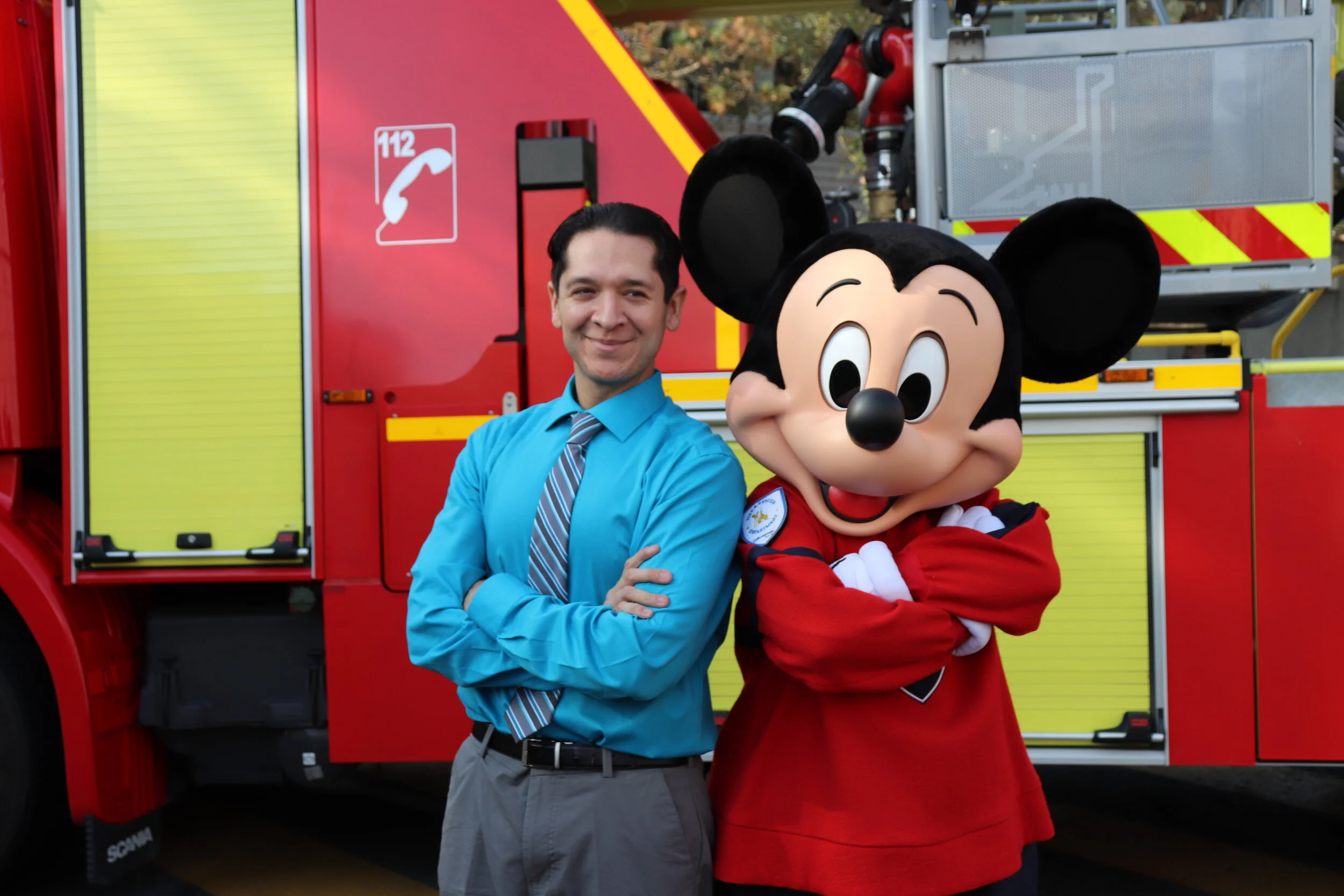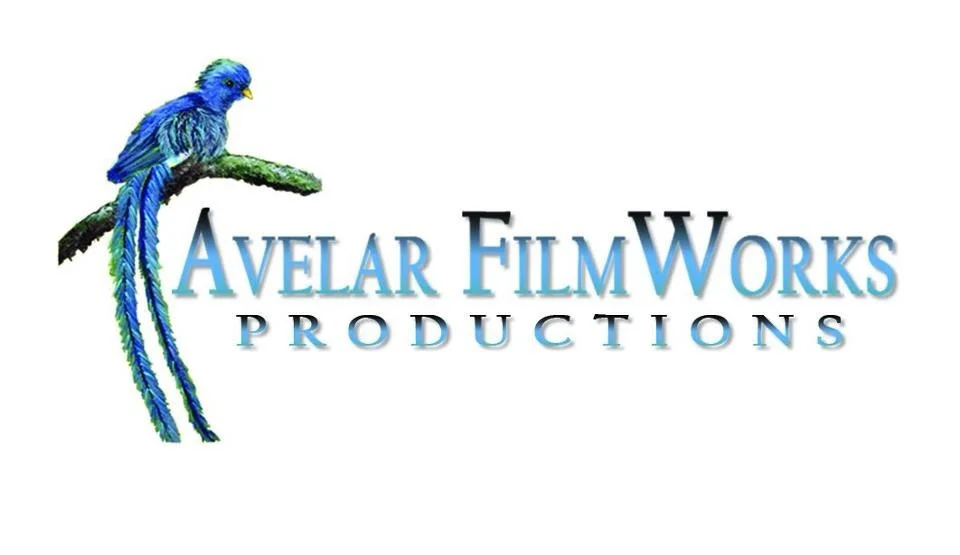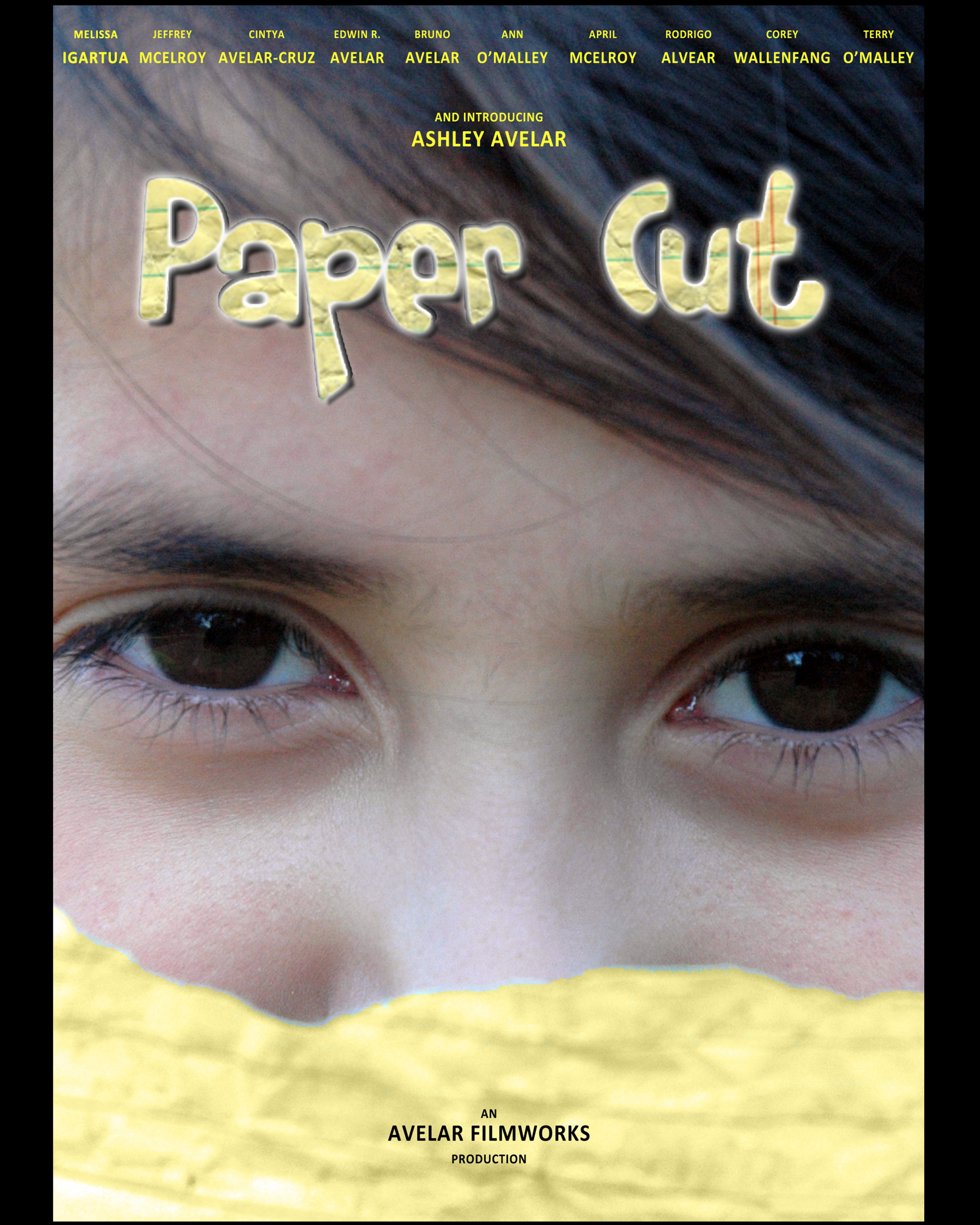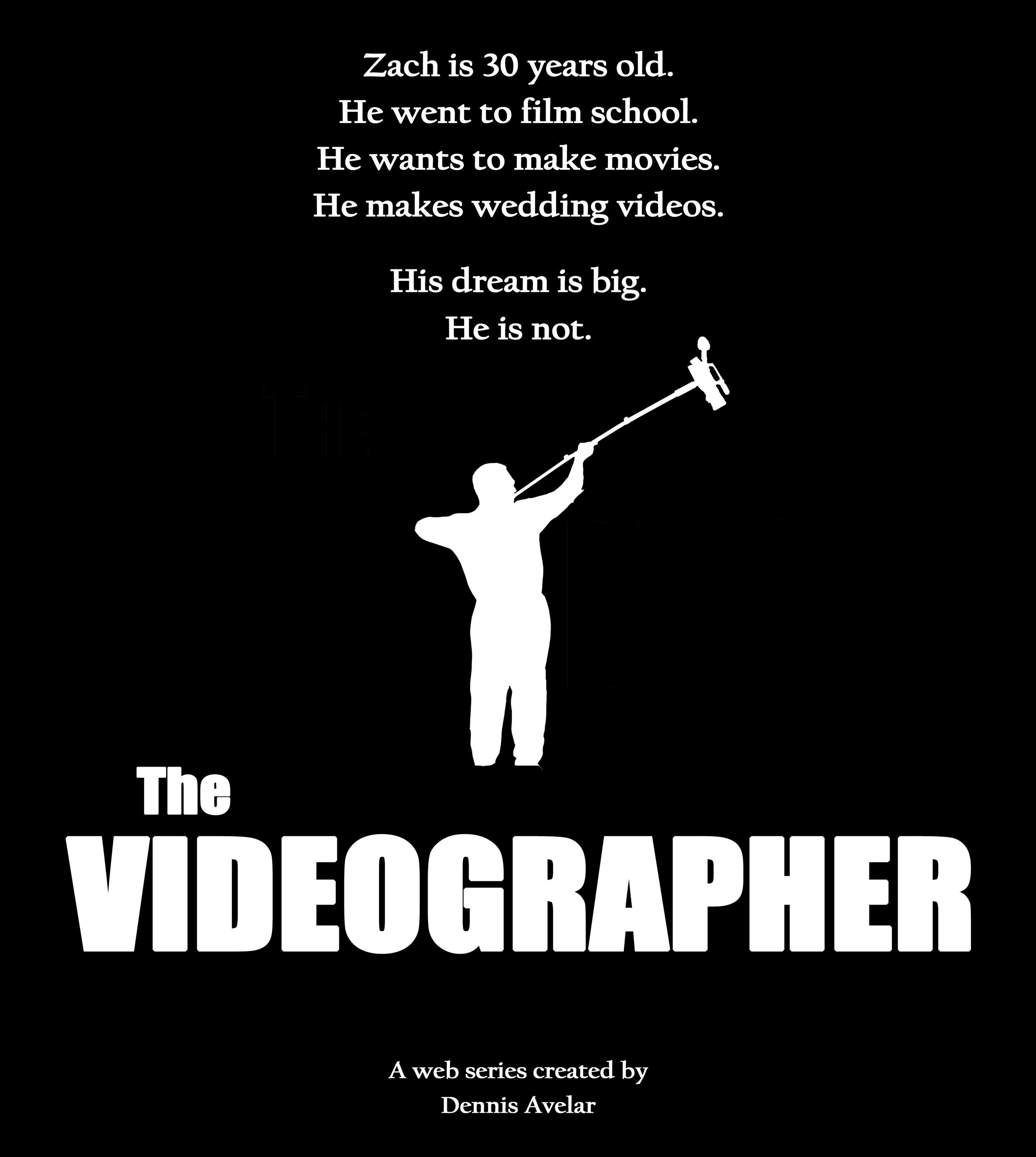
Professional Experience
ecolab
- Senior Communications Specialist - Global Water Learning and Development
uL Research Institutes
- Lead Outreach Project Coordinator
- Digital Content Developer (Education & Outreach)
Pace Suburban bus
- Communications Specialist
- Special Services and Data Coordinator
the nielsen company
- Scheduler
- Office Manager
- Panel Relations Specialist
- Marketing Support Associate
avelar filmworks inc.
- Creative Director
- Video Production Specialist
- Producer | Writer | Director | Editor
- Showrunner
Though not found on my resume, my professional career began during the summer after 8th grade when I was hired as a caddy at a local country club. During high school, my summers were spent working at a community pool, where I served as a lifeguard.
My official professional career began in September of 2001, when I was fortunate to join the Nielsen Company (formerly known as Nielsen Media Research) as a part-time scheduler. In over 7 years of employment with the company, the highlight of my time with Nielsen was the opportunity to meet and interview Mr. Arthur C. Nielsen Jr., who continues to be a source of inspiration for me to this day.
In March 2009, I joined the Marketing team of Pace Suburban Bus, a public transportation agency in the suburbs of Chicago, where I learned to appreciate the work that is done by those who tirelessly dedicate their careers to public service.
After over 6 years of service, in January of 2016, I was fortunate to find an opportunity as a Digital Content Developer on the Education and Outreach team of Underwriters Laboratories - a work environment that has enabled me to further my knowledge, skills and talents.
In my drive to reach my ultimate goal, I officially launched Avelar FilmWorks productions in November of 2010. While the company was in full operation, the main source of work came from the wedding industry, and so I learned the fine art of wedding cinematography. Working with these clients also provided an avenue to continue my passion of writing and creating my own stories, and from this venture I was able to produce 30 wedding stories, a feature-length concert video, a short film, and a 15-episode web series.
So what comes next? The pursuit of my goal will only cease when I finally achieve that which I have worked to attain since I learned a DeLorean could travel through time . While I know where I want my path to lead, I also recognize that the journey to get there is just as important. Though it may be the road less traveled, I will never cease to strive for my goal.

My Story…the longer version
This is the legend herself: my mom. My #1 fan since day one, and the person who showed me how to aim for the stars.
Int. - stone park, il - day
For as far back as I could remember, I have always loved watching and telling stories. If I am not mistaken, the first story that I watched was a theatrical performance of The Velveteen Rabbit, which occurred when I was about 7 years old. I do not recall much about the performance, but I do remember how much I enjoyed the experience. In terms of career paths, nothing made a larger influence on me than the film Back to the Future series. I was absolutely fascinated by the DeLorean’s ability to travel through time, and how well the story was structured to connect 1955 with 1985, and then 2015, then 1855. When my young mind learned that Doc Brown discovered a way to make that same car fly, that’s when I was forever hooked to the medium that would encapsulate the remainder of my life.
I was raised in the Chicago suburb of Stone Park, Illinois. My family lived in a humble home and I will always remember it as the place where I developed a passion for telling stories. My mother was a former educator turned homemaker, and my father was a small business owner by day and a machine shop employee by night.
Showing some love to my parents’ homeland, live from Paris.
My parents emigrated to the United States from Guatemala, and despite the distance from their homeland, they made every possible effort to establish a strong Guatemalan foundation while ensuring we did not ignore our American upbringing. The way my mother says it, “I needed you boys to eat frijoles y platanos as well as hot dogs and cheeseburgers”.
Fair enough.
As the youngest of three boys, my mother encouraged me to find what I loved to do, and to pursue my passion without fear or doubt. My father instilled upon me a tireless work ethic, which to this day I am grateful he found this to be the most important quality he could pass on to his sons.
In taking my mother’s advice, I found that my greatest passion in life was playing basketball. It was in the 1990’s in Chicago, and if you ever saw Michael Jordan play, you would understand why playing in the NBA was all I ever wanted to do. Reality set in some time around 9th grade, but it was fun while I lasted.
Writing and storytelling, however, was just in its infancy for me.
I wrote my first short stories by the age of 10, where I wrote about what I saw or read or found interesting. We did not have access to a printer or any type of publishing tools, so these stories were (sadly) lost in time.
My first home-printed story featured a character that I had known my entire life, and one who had supplied me with endless amounts of material. It was my older brother, Bruno, who became the subject of a short, semi-biographical story called My Big Brother. Only a few friends and family members ever read the story, and I did not think much of it at the time. I later learned that my father took a copy of My Big Brother to his work and kept it at his desk, and that he would read the story on particularly stressful days on the job. This made me realize that words can have an impact, and the proverbial “light bulb” slowly started to gain energy.
I graduated as a member of the National Honor Society from Proviso West High School (Go Panthers!) in Hillside, Illinois, where I discovered my love for performing on stage. With no previous experience in singing or acting, I was cast in the musical Crazy For You, and once again I was hooked. I invested every opportunity in learning about acting and theater, and as my abilities slowly developed, I was presented with a new challenge: directing. Lacking almost every necessary resource for putting on a good performance, some of the most loyal and talented of my friends and I put together the short play, A Case For Two Spies. Our success was minuscule (at best), but the experience is what won me over.
I discovered what I wanted to accomplish in my lifetime. I knew that I wanted to create worlds and tell amazing stories. I knew that the hours upon hours of studying Marty McFly’s story were an early investment in my future. And I absolutely knew I wanted to follow in my hero’s footsteps and be the next Steven Spielberg!
Easier said than done.
I had no idea what path to take, nor that a path to success even existed. Though I was so certain that I knew where my path ended, I had limited resources in which to make it possible. After graduating high school I enrolled in College of DuPage - a local community college - which enabled me to further my studies in the field I chose to pursue: Film Production. Having to pay for said education, however, was also my own responsibility. So I searched for a job where I could go to school during the day and work in the evening, and somehow find a way to manage it all for the next 4 years. I found what I needed, though not in the way I had expected.
My career with the Nielsen Company began in September of 2001. I was completely new to any type of office work, but I was desperate to learn in order to pay for my education. Having found a way to successfully work and attend classes simultaneously, I challenged myself to do even more. I increased my enrollment in school to 23 credit hours per quarter in my mission to complete all of my general education requirements in a single year, which meant that my life was lived at work, at school, or on my way to one or the other. It was a tough year, but it opened the path to the next phase.
So close, yet so far away…
In 2002, I was accepted into Columbia College Chicago’s film and video program. The first year proved to be an adjustment, but in time I was able to successfully manage my high workload. At the same time, the Nielsen Company was undergoing a huge expansion, and so I was fortunate in that I was promoted from part-time to full-time. I did my best in both worlds and was granted permission to continue to attend school on a full-time basis while working 45+ hours per week. It was difficult to find a balance, but I was confident in achieving my goal. Again, easier said than done.
As my responsibilities as a Nielsen employee expanded, I aimed to find a connection between my two worlds. By manner of perseverance, I discovered that Arthur C. Nielsen Jr., the son of the man who created the company, lived and worked a few miles away from where I worked. My goal was to meet him and interview him for a short documentary, which I hoped would get me high marks for one of my classes. Not only did I meet and interview Mr. Nielsen, but he also became a great source of inspiration for me. I produced the short documentary, The Great Arthur, which was well received and circulated by the field operations division of the company. However, while this was a large achievement, I had still not found the proper path that directed me towards my true objective.
In 2005, I graduated with honors with a BA in Film and Video. Instead of concentrating on one particular area of filmmaking, I wanted to learn as much as possible from various concentrations, and in the end I found that my degree more closely resembled project management than artistic expertise, which was not necessarily a bad thing. The ability to manage projects would be put to the test in the next phase of my career.
I wanted a chance to work among the most creative minds in the world. I made a conscious decision that I would do whatever it takes to make it – to find my path and follow it faithfully until I was given the opportunity to work along with the best of the best – and I made a plan for how the story was going to unfold. What I did not take in to account, however, was the economic collapse of 2008.
The only way to explore my creative side was to produce my own content, but I had to find a way to do so using the resources made available to me. Seeking new opportunities, I discovered a chance to work in the marketing department of Pace Suburban Bus, the suburban public transportation agency of the suburbs of Chicago. The transition from a large corporate structure to a much smaller government agency was difficult at first, but in time I found my place within the team. I still maintained the desire to insert creative content in a not-so-creative environment, so I began by producing short “route videos” that detailed how a particular Pace route operated. This idea proved to be a big success, and because of this (and other successful endeavors), I was honored to receive the Pace Setter Award (employee of the year) for my department in less than a year after I was hired.
But there was something still missing. How could route videos get me closer to my goal? Well, if you want something done right…
This was the official logo for Avelar FilmWorks. The blue bird is my interpreted version of the Quetzal, which was hand painted by my aunt, who thought the bird looked peculiar in blue.
In 2010 I officially launched my own company, Avelar FilmWorks Productions. Having no funding other than what I earned from my day job, I borrowed and purchased used camera equipment. Now, as much as I would like to admit that I acquired this equipment because I was hired to produce a commercial or music video, this would be a lie. As a matter of fact, I was hired and was paid to produce a video, but it was for a young couple on the verge of getting married. Like it or not, I had launched my company on the basis of producing wedding videos. However, I made it a point to make these videos far more than just a one-camera montage of a single-day event. I wanted these videos to stand the test of time, and with every successful production I learned new techniques and skills that were not even mentioned in film school. Life lesson: sometimes what you learn outside of the classroom teaches you more about yourself than what you thought you knew.
I was certain that I did not want to be a wedding videographer for very long, but because it was the company’s only source of income, I had no choice but to produce a series of wedding videos in order to fund other projects. It took two years, but after a series of lessons learned, I found the star for a script I had written a few years prior. My niece agreed to be in a short movie I wanted to produce, and finally having a minuscule budget, Avelar FilmWorks produced its first non-wedding project: Paper Cut.
This is it! I found what I was looking for, and from now on I will be on the path I so vehemently pursued!
The truth proved to be the complete opposite. Despite the small nature of the project, the workload (in addition to my day job and producing videos for wedding clients, both of which had high standards) was massive. I gained valuable knowledge, but despite my best wishes and efforts, this did not translate to success. Outside of my small circle of friends and family – and a few clients I asked to watch – my small film was not viewed by anyone, not even on social channels. It was a devastating reality. All I could do was either admit to myself that this project was a failure, or accept this as a testament to prove how badly I wanted to find success. I chose the former.
The dream – which was now over a decade old, was collapsing.
It took me some time, but eventually I had enough clients to purchase better video equipment, which meant I could charge more for my wedding work. Now having better audio and visuals, I thought that I had cleared my greatest obstacle in being a micro-budgeted filmmaker. Using my surroundings as my canvass, I developed an idea for a web series: a story about a wedding videographer who dreamed of working in the film industry, but whose life was the opposite of what his cameras captured. For this project, I would now move to both sides of the camera, and put myself in a position where it would be up to me to bring this story to life. No excuses! In the first season, I produced 3 episodes of The Videographer.
Though I was re-investing the funds I earned from wedding projects, my company was still not producing profits. This proved to be a problem, but I knew that if I were to solely pursue this path, it would lead me away from my ultimate goal. I had to keep going, despite the losses, and produce that which I knew would be the catalyst towards achieving my dream. At Pace, I earned a promotion to Communications Specialist, which helped relieve some of the stress.
The wedding projects continued, now slightly more aggressively because I wanted to use the experience I captured during weddings to be incorporated into the series. I was slowly gaining traction once again. A second season of the series was planned and produced, which was twice as many episodes as the first season, with more complex scripts and increased production values. I loved the work, but I knew I could not sustain my workload for too much longer. Working a full-time day job, running a business, and producing a web series while coaching my niece’s basketball team and trying to have a social life was all proving to lead in a direction I was not sure I wanted to follow, and I knew that eventually, something had to give.
Behind the scenes of The Videographer. It was colder than it looks.
By the end of the series, we produced 15 episodes over a 3-year span. It was a challenge that took a toll on me in almost every way, but I was proud of the work. I had so much fun, and despite (once again) the lack of success in this project, I did not think of it as a failure. At least, not at the time. The reason for this was because the series was not written to be biographical, but rather as an interesting perspective on an uncommon situation.
The only part of the entire series that I had fully intended on actually making come true was the absolute last scene of the final episode (occurs after the credits), which allowed my character to fulfill the goal that I wanted – even if I could not do so in reality.
Upon wrapping the series, I was offered an opportunity to work for a unique organization, which would expose me to a world far from my comfort zone. In January of 2016 I began my career at Underwriters Laboratories as a Digital Content Developer in the Education and Outreach department. Working in this field would soon teach me to work far outside my comfort zone, and to not fear the brilliant engineering minds of real-life safety scientists but rather to learn from them and capture their knowledge and share it with the world.
In that same year - the year that Avelar FilmWorks finally made a profit - I decided that achieving my goal would no longer be reachable. I knew that if I were to continue with my company, I would follow a careerpath I did not want, and so I made the logical case for cancelling my hopes and dreams and shutting it down. I did not choose to settle, but instead shifted my focus and learned to appreciate the new direction my life was taking.
Life, however, does not occur without a sense of irony.
The fictional storyline of a character I created was actually happening in real life, and it led me to a intersection on a road I thought was closed years prior: stay on the ground and learn to appreciate the darkness, or get back up, learn from your failures, and go after who you were meant to be. This time, I chose the latter.
Today, I refuse to let past experiences serve as justification for deteriorating my ambition. I know where I want to go and where I am supposed to be, and although my path will be along the road less traveled, I am confident that every experience I have endured which has led me to this point will not have been in vain.
For these experiences and for the people who have stayed with me as I fell, as I failed, and as I learned to pick myself up, I am now and will forever be grateful.
I call him “the silent guardian”. On many a late nights, this was my sole companion at the office.









